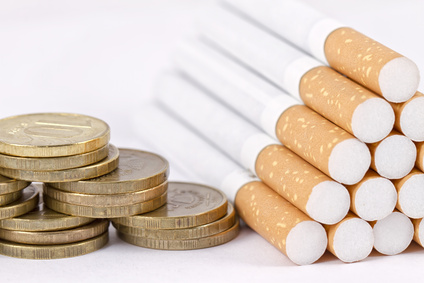By: Abdul Shakoor Shah
“Throwing away food is like stealing from the table of those who are hungry.” Pope Francis. The history of food waste is directly linked to globalization. From farm to table, food is lost or wasted at every stage. Fresh foods such as fruits, vegetables, dairy, and meat are principally susceptible. If we realize what hunger is, we shall think twice before wasting or throwing food. The rich talk about tastes while the poor have nothing even to taste. Food wastage is a global problem. One-third of the world’s edible food, an estimated 1.3 billion tons, worth $1 trillion is annually wasted worldwide. On the other hand, globally we have nearly 1 billion hungry people. The amount of food lost or wasted costs 2.6 trillion USD annually and is more than enough to feed 815 million hungry people in the world four times over. We can feed more than a quarter of worldwide hungry people with the wasted food only in the US, UK, and Europe. 2.3 billion Souls are expected to join our planet by 2050. It means we are bound to increase global food production up to 60-70% or we can meet food shortage by stopping food wastage. Approximately, an area more than China is cultivated that is never eaten but thrown away. Through food wastage, we waste 25% of the world’s freshwater that is used for food growing which is never eaten. More than 50% of food wastage in most developed countries takes place in homes. Its annual worth is more than $2, 277 per family in the US and UK. In the US, a person wastes almost 1 pound of food daily. According to USDA, 103 million tons of food were wasted in the US which is approximately 30-40% of the food supply in 2017. The US is the worldwide leader in food wastage.
We can turn waste into worth by turning leftovers into new products by converting hotel oddments into bioplastics and home food waste into biogas essentially using food scraps to produce household energy.
According to FAO, about 50% of fruits and vegetables are wasted. It means one-third of food produced for humans, 1.3 billion tons goes waste. Pakistani, waste 40% of their food. A single hotel in Islamabad wastes nearly 870kg of food daily. Predictably, 36 million tons of food is wasted in Pakistan annually. This is equal to every citizen of Karachi, Lahore, and Hyderabad ranging abroad for outdoor eating daily. Intense weather conditions and ceremonies result in food wastage. According to the country director of the World Food Program, Lola Castro, 43% of the country’s population remains food insecure, with 18% facing a severe shortage. The Global Hunger Index 2016 ranks Pakistan as a country with a “serious” hunger level. 2.5-liter water is enough for drinking each day; it takes about 3,500 liters to produce the food for one person for one day. Food waste impacts natural resources in terms of land and soil degradation. Food wastage does not mean only waste food but it also wastes, fertilizers, pesticides, fuel, electricity, and human energy. Food insecurity is a threat and multiplier for violent conflict. Moreover, the US National Intelligence Council reveals, declining food security will lead to social disruption, economic downfall, and political instability. According to the FAO, high-and low-income countries discard similar amounts of food-670 and 630 million tons, respectively. In low-income countries, loss occurs more often in the earlier stages while in others, it transpires in later stages.
According to the FAO, food production for human use, per capita, is around 460 kg annually in poor areas, compared to 900 kg in rich regions. According to specialists from the University of Birmingham, the lack of a sustainable cold chain contributes to 4.4 billion GBP worth of fruit and vegetables being wasted annually in India. About 70 % of freshwater is used for agricultural purposes. The production of just one apple requires an average of 125 liters of water, which means throwing away a bruised apple is akin to draining 125 liters of water. Food Wastage Footprint Report discloses that 250 km3 of water, three times the volume of Lake Geneva, is used annually to produce food that is ultimately lost or wasted. The FAO guesstimates the carbon trail of food waste is 3.3 billion tonnes of CO2 equivalent per year. Food wastage not only increases oil, diesel, and other polluting fuels but also causes greenhouse gas emissions. Redundant waste decaying in landfills gives off methane, a powerful greenhouse gas 25 times more proficient at trapping heat than carbon dioxide.
There are some recommendations to meet the enigma of food wastage: we should train farmers and food-related workers to avoid food wastage. We should improve our farming and agricultural technologies. We can use solar power refrigerators to avoid pollution caused by food wastage. We can avoid it by using a surplus strategy. We can set up a surplus market like “SirPlus”, “WeFood”, for unused and discarded foods at a minimum price for feeding the poor and minimizing food wastage. We can improve supply chains to avoid this issue. We can turn waste into worth by turning leftovers into new products by converting hotel oddments into bioplastics and home food waste into biogas essentially using food scraps to produce household energy. We can solve the food wastage riddle by educating the people and creating awareness about food wastage. We need to change consumer attitude and behavior via public-private sector initiatives like Mimica.
The public-private organizations must step forward to collect extra food and provide it to the needy and the poor. We should establish a Waste Food market like the one in Leeds, England for stocking wasted food. We can avoid it by improving our processing, infrastructure and transportation system. The uneven and bumpy roads bruise the fruits and vegetables. We must take initiatives to change consumers’ habits which are chiefly responsible for food wastage at a later stage. By one get one deal should be banned as they encourage food wastage. We must make date labeling understandable for laymen. By sensible date labeling we can control food wastage. According to the European Commission, an estimated 10 % of the EU’s 88 million annual tons of food waste are related to date labeling.
The Writer is Prof. in English and Freelance Columnist, based in Lahore, Pakistan. He can be reached at [email protected]








